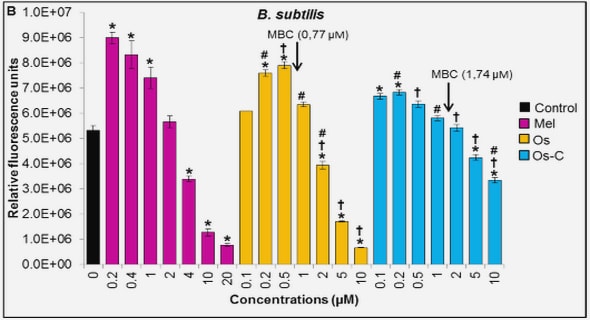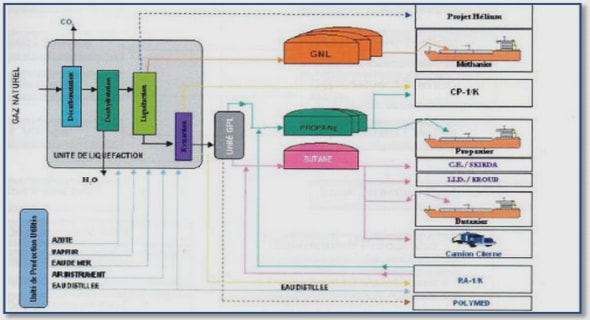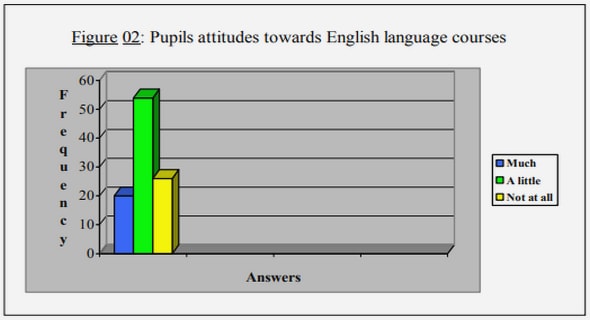Get Complete Project Material File(s) Now! »
Introduction
The gastrointestinal tract (GIT) is dedicated to processing and absorbing nutrients and fluids essential for the maintenance of good health (Martinez-Augustin et al., 2009). For the GIT to function optimally, a balance is maintained between intestinal motility and intestinal fluid volume. The latter process is finely regulated through the control of fluid absorption via intestinal villous epithelial cells and secretion across the intestine via intestinal crypt cells (Martinez-Augustin et al., 2009). Net fluid absorption driven by osmotic gradients controlling the movement of electrolytes (sodium ions [Na+] and chloride ions [Cl-]), sugars and amino acids across the epithelial lining of the lumen, predominate in these opposing processes (Pash et al, 2009). In contrast, motility is controlled by the activation of enteric nervous system (ENS) by either neurotransmitters, inflammatory mediators or epithelium membrane lipid peroxidation by-products (Wood, 2004). Any upset of this delicate intestinal fluid balance (decrease fluid absorption and increase fluid secretion), and/or changes in GIT motility usually causes intestinal disorders clinically evident as diarrhoea (Vitali et al., 2006).
Diarrhoea is loosely defined as an alteration in the normal bowel movement characterized by an increase in the volume, frequency and water content of stool (Baldi et al., 2009). The pathophysiology of diarrhoea include microbial and parasitic infections (Hodges and Gill, 2010), stress (oxidative or physical) (Soderholm and Perdue, 2006), dysfunctional immunity (Schulzke et al., 2009), disrupt GIT integrity and neurohumoral mechanisms (Vitali et al., 2006; Spiller, 2004). Diarrhoea can also be a symptom of other diseases such as cholera, irritable bowel syndrome (IBS), gastroenteritis (intestinal inflammation and ulcerative colitis) (Schiller, L. R., 1999; Baldi et al., 2009), malaria (Gale et al., 2007) and diabetes mellitus (Forgacs and Patel, 2011).
The mechanism causing diarrhoea can be secretory (resulting from osmotic load within the intestine), hyper motility (resulting from rapid intestinal transitions) or hypo motility (resulting in decreased intestinal fluid reabsorption) or combination of these mechanisms (Vitali et al., 2006). The symptoms are either caused by an increase in fluid and electrolyte secretion predominantly in the small intestine or a decrease in absorption which can involve both small and large intestine (Pash et al, 2009; Spiller and Garsed, 2009). Physiologically, diarrhoea is considered beneficial to the GIT as it provides an important mechanism of flushing away harmful luminal substances (Valeur et al., 2009). However, diarrhoea becomes pathological when the loss of fluids and electrolytes exceeds the body’s ability to replace the losses.
As a disease, diarrhoea is considered one of the most dangerous GIT disorders as death can result in severe cases due to dehydration and loss of electrolytes (WHO and UNICEF, 2004). According to the World Health Organization (WHO)/United Nation Children Fund (UNICEF) report, more than 1 billion diarrhoeal episodes occurred in human across the world yearly, with about 5 million deaths especially in infants (Thapar and Sanderson, 2004). In addition to causing acute disease and mortality, diarrhoea associated malnutrition could result in stunted growth, non-optimal immune functionality and increase susceptibility to infections. Diarrhoea therefore poses a major health challenge to human, as it could lead to premature mortality, disability and/or increase health-care costs (Guerrant et al., 2005).
In animal production, diarrhoea is presumed to impose heavy productivity losses on affected farms, although true effects in monetary terms cannot be easily appreciated. The apparent on-farm losses are reduction in productivity (milk, wool, egg, meat and meat quality), increased mortality and morbidity, weight loss and abortion (Chi et al., 2002). Episodes of diarrhoeal diseases can also affect the export market and hurt consumer’s confidence in the products (Yarnell, 2007).
CHAPTER ONE Gastrointestinal disorders in diarrhoea diseases mechanisms and medicinal plants potentiality as therapeutic agents
1.0. Introduction
1.1. Plant metabolites as potential therapeutic agent
1.2. Aims
1.3. Specific objectives
1.4. Hypothesis
CHAPTER TWO Literature review
2.1. Diarrhoea as a disease
2.2. Pathophysiology of Diarrhoea
2.3. Detailed pathophysiology of diarrhoea
2.3.1. Inflammation in diarrhoea
2.3.2. Oxidative damage in diarrhoea
2.3.3. Enteric nervous system in diarrhoea
2.3.4. Cystic fibrosis transmembrane conductance regulator (CFTR) regulation
2.4. Specific Agents of Diarrhoea
2.4.1. Bacterial causes of diarrhoea
2.5.1. Candida albicans
2.6. Viral induced diarrhoea
2.6.1. Rotavirus
2.6.2. Norovirus
2.6.3. Hepatitis A virus
2.6.4. Human immunodeficiency virus (HIV)
2.7. Protozoa induced diarrhoea
2.7.1. Giardia intestinalis
2.7.2. Entamoeba histolytica
2.7.3. Cryptosporidium parvum
2.7.4. Cyclospora cayetanensis
2.8. Parasitic induced diarrhoea
2.8.1. Trichinella spiralis
2.9. Immune disordered induced diarrhoea
2.9.1. Compromised immune system
2.9.2. Hyperactive immune system
2.10. Antibiotic therapy induced diarrhoea
2.10.1. Antibiotic toxicity
2.10.2. Alteration of digestive functionality
2.10.3. Overgrowth of pathogenic microorganisms
2.11. Diabetic complications induced diarrhoea
2.12. Food allergy induced diarrhoea
2.13. Potential mechanisms in the control of diarrhoea
2.13.1. Oxidative damage and antioxidants in diarrhoeal management
2.13.2. Inflammation and anti-inflammatory agents in diarrhoea management
2.13.3. Enteric nervous system in diarrhoea symptoms and treatment
2.14. Plants as potential source of therapeutic agents in alleviating diarrhoeal symptoms
2.14.1. Anti-infectious mechanisms of plant secondary metabolites against diarrhoeal pathogens
2.14.2. Antioxidative mechanisms of plant phytochemical as potential antidiarrhoeal agents
2.14.3. Anti-inflammatory mechanisms of plant phytochemical in diarrhoea management
2.14.4. Antidiarrhoeal mechanisms of plant phytochemical
2.15. Classification of phytochemicals with antidiarrhoea potential
2.16. Ethnobotany and scientific investigation of plant species used traditionally in treating diarrhoea in South Africa
2.17.Conclusion
CHAPTER THREE Plant selection, collection, extraction and analysis of selected species
3.1. Introduction
3.2. Solid-liquid extraction
3.3. Liquid-liquid fractionation
3.4. Thin layer chromatography (TLC)
3.4.1. Phytochemical fingerprints
3.5. Materials and Methods
3.5.1. Selection of South Africa medicinal plants for antidiarrhoeal screening
3.5.2. Collection of plant materials
3.5.3. Preparation of plant material and optimization of phenolic-enriched extraction process
3.5.4. Phytochemical profiling
3.6. Quantification of the phenolic constituents of the extracts
3.6.1. Determination of total phenolic constituents
3.6.2. Determination of total tannin
3.6.3. Determination of proanthocyanidin
3.6.4. Determination of condensed tannin
3.6.5. Determination of hydrolysable tannin (gallotannin)
3.6.6. Determination of total flavonoids and flavonol
3.6.7. Determination of anthocyanin
3.7. Results
3.7.1. Yield of extractions and fractionations processes
3.7.2. Phytochemical screening (fingerprints)
3.7.3. Phenolic composition of the crude extracts
3.8. Discussion
3.8.1. Yield
3.8.2. Thin layer chromatogram
3.8.3. Phenolic constituents of the crude extract
3.9. Conclusion
CHAPTER FOUR Antimicrobial activities of the plant extracts against potential diarrhoeal pathogen
4.1. Qualitative antimicrobial (Bioautography) assay
4.2. Quantitative antimicrobial activity (Minimum inhibitory concentration (MIC)) assay
4.3.Selection of microorganisms used in the study
4.4. Material and Methods
4.4.1. Microorganism strains
4.4.2. Culturing of the Bacteria
4.4.3. Bioautography against some pathogenic microorganisms
4.4.4. Determination of Minimum Inhibitory Concentration (MIC) against the bacteria pathogens
4.4.5. Determination of Minimum Inhibitory Concentration (MIC) against the fungal pathogens
4.5. Results
4.5.1. Microbial bioautography
4.5.2. Minimum inhibitory concentration against bacteria
4.5.3. Minimum inhibitory concentration (MIC)
4.6. Discussion
4.6.1. Antimicrobial bioautography
4.6.2. Minimum inhibitory concentration (MIC)
4.7. Conclusion
CHAPTRER FIVE Free radical scavenging and antioxidant activities of the extracts and fractions as antidiarrhoeal mechanism
5.1. Introduction
5.1.1. Superoxide ion
5.1.2. Hydrogen peroxide
5.1.3. Hydroxyl radical
5.1.4. Peroxyl radical
5.1.5. Hypochlorous acid
5.1.6. Nitric oxide
5.2. Antioxidant assays
5.2.1. Antioxidant bioautography er (FRAP)
5.3. Materials and Methods
5.3.1. Antioxidative profile of the crude extracts and fractions using DPPH radical solution
5.3.2. Antioxidative assays
5.4. Result
5.4.1. TLC-DPPH analyses
5.4.2. DPPH effective concentration (EC50)
5.4.3. ABTS effective concentration (EC50)
5.4.4. FRAP gradient
5.4.5. Hydroxyl radical effective concentration (EC50)
5.4.6. Lipid peroxidation inhibition effective concentration (EC50) 9
5.5. Discussion
5.5.1. Qualitative antioxidant analyses (DPPH-TLC bioautography)
5.6. Conclusion
CHAPTER SIX Anti-inflammatory activities of the crude extracts as antidiarrhoeal mechanisms
CHAPTER EIGHT Motility modulation potential of Bauhinia galpinii and Combretum vendae phenolic-enriched leaf extracts on isolated rat ileum
CHAPTER NINE Isolation and characterization of antimicrobial and antioxidant compounds from Bauhinia galpinii and Combretum vendae


